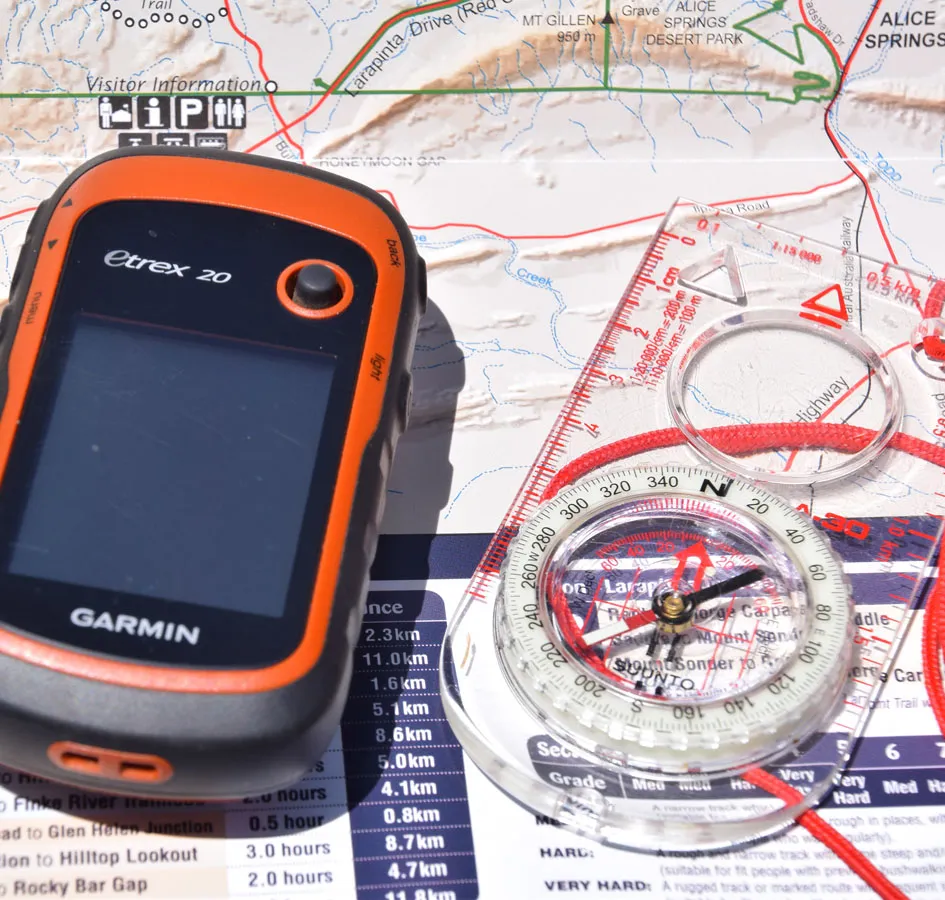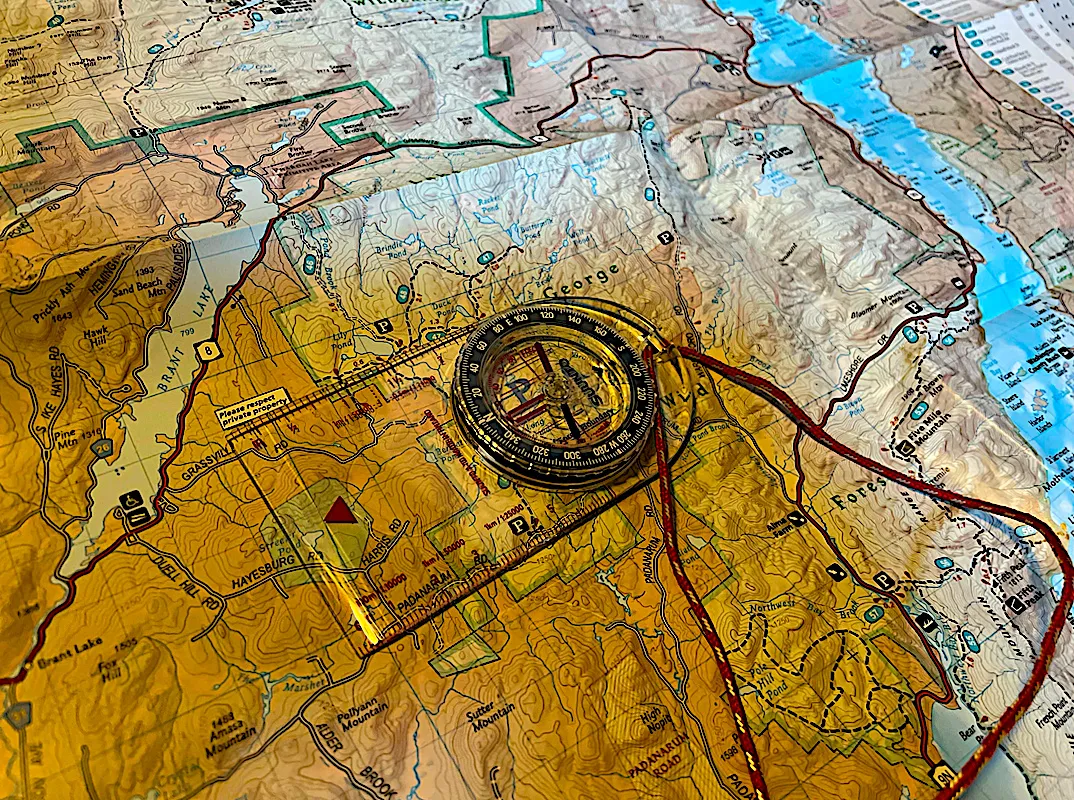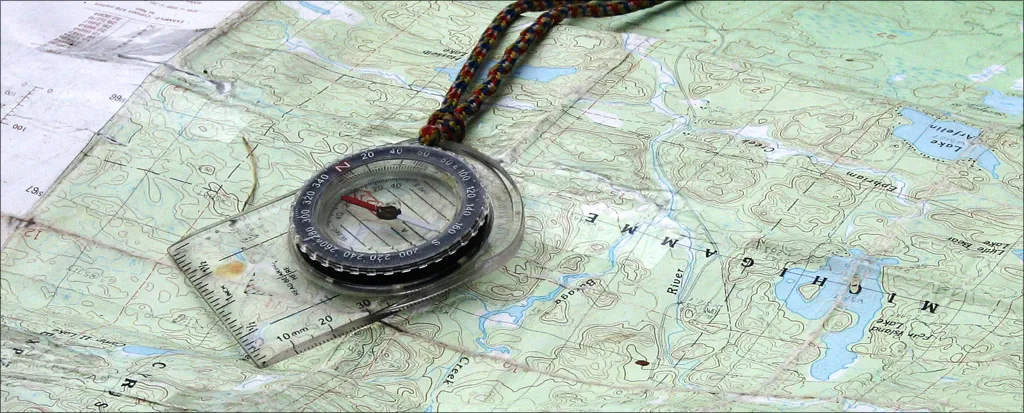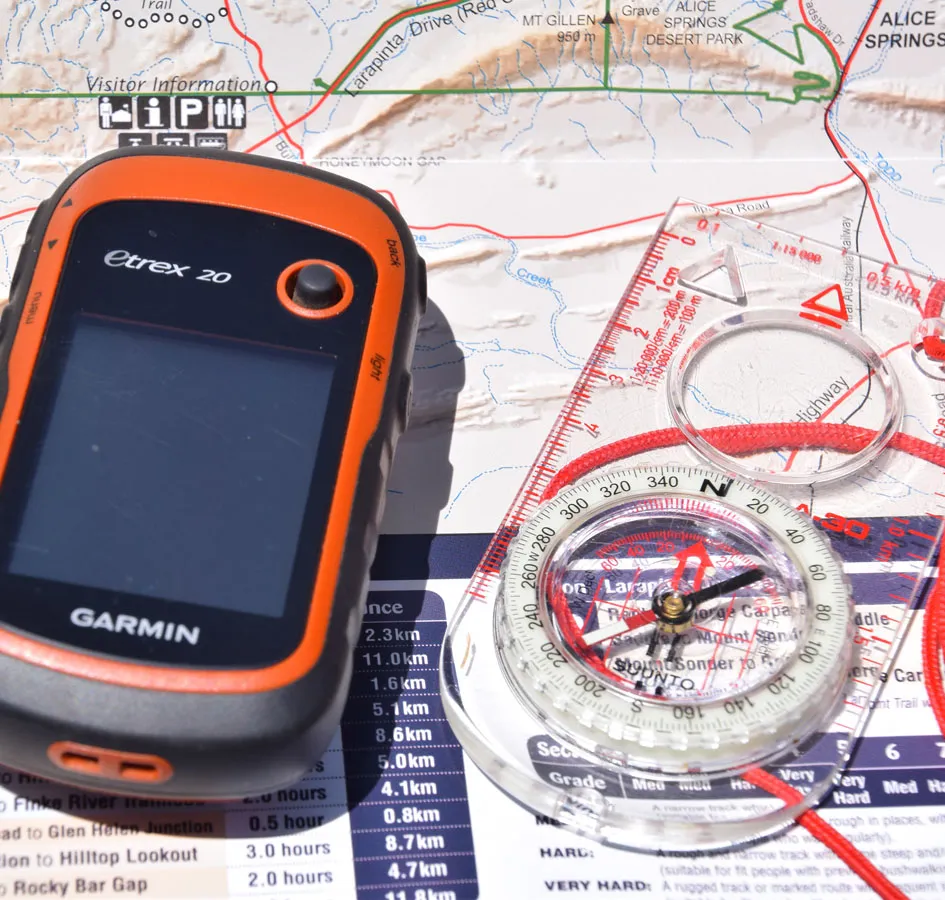Map orientation is one of the most crucial, yet often overlooked, elements of compass hiking techniques. In my early days hiking the Cascade Range, I mistakenly assumed that map north and magnetic north were the same—an error that quickly caused serious navigation confusion. It wasn’t until an experienced mountain guide introduced me to the concept of declination adjustment that everything clicked. Learning how true north, magnetic north, and grid north interact not only sharpened my wilderness navigation skills but also laid the foundation for confident, accurate backcountry travel.

The Complete Guide to Using Compass Hiking: Master Navigation Skills for Safe Adventures
I've been exploring wilderness trails for over fifteen years, and I can confidentially say that mastering the art of using compass hiking techniques has transformed my outdoor adventures. Whether you're planning your first backcountry expedition or looking to enhance your navigation skills, this comprehensive guide will equip you with the knowledge and confidence to navigate safely through any terrain. From understanding declination adjustments to executing precise bearing calculations, these essential skills will ensure you never lose your way on the trail again. Visit Nature Guests for more outdoor adventure guides and expert hiking tips.
Why Using Compass Hiking Skills is Essential

After spending countless hours navigating through dense forests in the Pacific Northwest and across alpine meadows in the Rockies, I've learned that using compass hiking techniques is not just a nice-to-have skill—it's absolutely essential for any serious outdoor enthusiast. During a particularly challenging trek through Olympic National Park last spring, my GPS device failed due to heavy rainfall, and my compass skills literally saved the day. The confidence that comes from mastering traditional navigation methods transforms your entire hiking experience.
Modern technology has spoiled many hikers into believing that smartphones and GPS devices are infallible. However, I've witnessed firsthand how quickly electronic devices can fail in harsh weather conditions, suffer battery depletion, or lose satellite signals in dense canopy cover. Using compass hiking methods provides a reliable backup system that never requires batteries or clear sky visibility. Park rangers I've spoken with in Yellowstone consistently emphasize that visitors who understand compass navigation rarely need search and rescue assistance.
The psychological benefits of compass proficiency cannot be overstated. When you understand how to read terrain features and correlate them with your map, you develop an intimate connection with the landscape that GPS users simply cannot experience. This deeper awareness enhances your appreciation of natural environments while simultaneously improving your safety margins. For those interested in comparing traditional and modern navigation methods, I highly recommend reading about GPS vs map navigation techniques to understand when each method proves most effective.
Pro Tip: Start practicing compass navigation on familiar trails near your home. This builds confidence before venturing into unfamiliar territory where mistakes could have serious consequences.
Understanding Your Compass Components
Before diving into practical using compass hiking applications, you must thoroughly understand your instrument's anatomy. I remember my first compass—a basic Silva model my grandfather gave me—seemed overwhelmingly complex until I learned each component's specific function. A quality baseplate compass contains several critical elements that work together to provide accurate directional information under field conditions.
The baseplate forms your compass's foundation, typically constructed from clear plastic that allows map visibility underneath. Along the baseplate's edges, you'll find rulers calibrated for common map scales, essential for measuring distances during route planning. The direction-of-travel arrow, clearly marked on the baseplate, indicates which direction to point your compass when taking or following bearings. This arrow must always point toward your intended destination during navigation exercises.
The rotating bezel, also called the azimuth ring, features degree markings from 0 to 360 degrees. Inside this bezel, the magnetized needle perpetually points toward magnetic north, with the red end universally indicating northward direction. The orienting arrow, fixed within the bezel, provides a housing for the magnetic needle during proper compass alignment. Parallel orienting lines rotate with the bezel and must align with your map's north-south grid lines during orientation procedures.
Advanced compasses include additional features like declination adjustment screws, which allow permanent magnetic declination corrections for your local area. Some models feature luminous elements for low-light navigation, while others include clinometers for measuring slope angles. Understanding these components thoroughly before hitting the trail ensures smooth navigation when conditions become challenging and decision-making must happen quickly.
Mastering Map Orientation and Declination

Magnetic declination varies significantly based on your geographic location and changes gradually over time due to shifting magnetic pole positions. In my home region of Colorado, magnetic declination currently measures approximately 8 degrees east, meaning magnetic north lies 8 degrees east of true north. This difference might seem minor, but over long distances, incorrect declination adjustments can lead to substantial navigation errors. I always check current declination values using NOAA's online calculator before embarking on any backcountry adventure.
To properly orient your map, place it on a flat surface and position your compass with the direction-of-travel arrow pointing toward the map's top edge. Rotate the bezel until north aligns with the direction-of-travel arrow, then slide the baseplate until one straight edge aligns with the map's edge. While holding both map and compass steady, rotate your entire body until the magnetic needle sits within the orienting arrow. Your map now accurately reflects the surrounding terrain's actual orientation.
Practice map orientation regularly in familiar areas before attempting complex navigation in unknown terrain. I recommend starting in local parks where you can verify your compass work against known landmarks. This builds muscle memory and confidence for situations where accurate navigation becomes critical for safety. Remember that proper hiking route planning always begins with understanding your starting position and desired destination on properly oriented maps.
Taking and Following Bearings
Taking and following bearings represents the practical application of using compass hiking skills in real-world scenarios. I vividly remember my first successful bearing-based navigation during a fog-shrouded traverse of Mount Washington's alpine zone. Visibility dropped to less than fifty feet, but my compass bearing kept me on track to reach the observatory safely. This experience demonstrated how bearing techniques can literally mean the difference between reaching your destination and becoming hopelessly lost in challenging conditions.
To take a bearing from your map, position the compass baseplate so its straight edge connects your current location with your intended destination. Ensure the direction-of-travel arrow points toward your target rather than away from it. While keeping the compass firmly against the map, rotate the bezel until the orienting lines align parallel with the map's north-south grid lines. The bearing number appears where the direction-of-travel arrow intersects the bezel's degree markings.
Following a bearing requires discipline and regular checking to maintain accuracy. Hold your compass level at chest height with the direction-of-travel arrow pointing away from your body. Rotate your entire body until the magnetic needle sits within the orienting arrow—the classic "red in the shed" alignment. The direction-of-travel arrow now points toward your destination. Pick a landmark along this line and walk toward it, rechecking your bearing every few hundred yards to account for inevitable drift.
Field Bearing Techniques
Taking bearings in the field requires different techniques than map-based bearing calculations. When I need to determine my location using visible landmarks, I select prominent features that I can also identify on my topographic map. Point your compass directly at the landmark with the direction-of-travel arrow, then rotate the bezel until the magnetic needle aligns with the orienting arrow. The bearing reading provides the angle from your position to that landmark, information you can transfer back to your map for triangulation purposes.
Weather Consideration: Always check current conditions before relying on compass navigation. For comprehensive weather planning, explore our guide on weather forecasting for hikers to ensure safe outdoor adventures.
Advanced Navigation Techniques

Advanced using compass hiking techniques separate experienced navigators from casual trail followers. Triangulation, back-bearings, and aiming-off represent sophisticated methods I've employed during complex multi-day expeditions across challenging terrain. These techniques proved invaluable during a recent traverse of the Wind River Range, where weather conditions eliminated visibility for extended periods and precise navigation became essential for locating resupply caches.
Triangulation allows position determination when you cannot pinpoint your exact location on the map. Select three prominent landmarks visible from your position and identifiable on your topographic map. Take bearings to each landmark, then transfer these bearings to your map by drawing lines from each landmark back toward your approximate position. The intersection point of these three lines indicates your current location, though real-world measurements typically create a small triangle rather than a perfect point intersection.
Aiming-off techniques prove particularly useful when navigating toward linear features like rivers, roads, or ridgelines. Instead of taking a bearing directly toward your intended destination, deliberately aim to one side by 10-20 degrees. When you encounter the linear feature, you'll know which direction to turn to reach your destination. This technique eliminates the guesswork inherent in trying to hit a precise target, especially valuable when visibility remains limited or terrain forces frequent detours around obstacles.
Back-bearing calculations help verify your position and ensure navigation accuracy. Take a bearing to a known landmark, then add or subtract 180 degrees to determine the reciprocal bearing. This back-bearing should point from the landmark directly toward your position. If your calculated back-bearing doesn't align with your expected position on the map, recheck your work and consider alternative position estimates. Understanding proper trail conditions helps optimize navigation planning—learn more about checking trail weather conditions for safer outdoor adventures.
Safety Tips and Best Practices
Safety considerations form the foundation of responsible using compass hiking practices, particularly when venturing into remote wilderness areas. During my decade-plus of backcountry exploration, I've witnessed too many avoidable emergencies caused by inadequate navigation preparation and overconfidence in technology-dependent systems. Developing robust safety protocols around compass navigation ensures you can handle unexpected situations with confidence and competence.
Always carry backup navigation tools regardless of your compass proficiency level. I typically pack two compasses—a primary baseplate compass for general navigation and a smaller button compass as emergency backup. Additionally, I carry laminated topographic maps in waterproof cases, ensuring they remain readable even in severe weather conditions. Pre-marked waypoints, escape routes, and emergency contacts should be clearly indicated on your maps before departing civilization.
Practice navigation skills regularly in non-critical situations to build competence for emergency scenarios. I recommend monthly compass exercises in local parks or familiar trail systems, gradually increasing complexity as your skills improve. Night navigation practice proves particularly valuable, as many emergency situations occur during hours of darkness when landmarks become difficult to identify. Understanding how to adapt using compass hiking techniques for low-visibility conditions could prevent a simple navigational error from escalating into a life-threatening situation.
Environmental Considerations
Environmental factors significantly impact compass accuracy and must be considered during navigation planning. Metallic objects including belt buckles, knives, and electronic devices can deflect compass needles, leading to incorrect readings. I always hold my compass at arm's length away from any potential magnetic interference sources. Additionally, electrical storms can temporarily affect compass behavior, so I avoid navigation during lightning activity and seek shelter until conditions improve.
Emergency Protocol: If completely lost, stop moving immediately. Use the STOP technique—Sit, Think, Observe, Plan. Take multiple bearings to known landmarks and carefully review your recent travel history before making navigation decisions.
Temperature extremes affect compass performance and map readability. Cold weather can make compass fluid sluggish, while extreme heat might cause air bubbles to form inside the compass Housing. I store my compass inside my jacket during winter hiking to maintain optimal operating temperature. Laminated maps resist moisture but can become brittle in extreme cold, so gentle handling becomes essential. For comprehensive navigation guidance in challenging conditions, this complete guide to using compass hiking provides additional safety protocols and emergency procedures.
Conclusion
Mastering the art of using compass hiking techniques represents far more than simply learning technical skills—it opens doorways to deeper wilderness exploration and enhanced outdoor confidence. Throughout my years of backcountry adventures across North America's most challenging terrain, compass navigation has consistently proven itself an invaluable companion, reliable when modern technology fails and essential for truly understanding the landscape around you. The investment in developing these fundamental skills pays dividends through increased safety margins, expanded exploration possibilities, and the profound satisfaction that comes from self-reliant wilderness travel.
The techniques covered in this comprehensive guide—from basic compass components through advanced triangulation methods—provide a solid foundation for safe and effective wilderness navigation. However, knowledge without practice remains merely theoretical understanding. I strongly encourage readers to begin practicing these skills immediately in familiar, low-risk environments before venturing into remote areas where navigation errors could have serious consequences. Start with simple bearing exercises in local parks, gradually building complexity as your confidence and competence grow.
Remember that using compass hiking skills complement rather than replace modern GPS technology. The most successful wilderness travelers combine traditional and modern navigation methods, using each technique's strengths to offset potential weaknesses. Electronic devices provide precise positioning and route tracking capabilities, while compass and map skills offer reliability and deeper terrain understanding that technology cannot match. This balanced approach ensures navigation competence regardless of equipment failures or challenging environmental conditions.
As you develop your navigation expertise, share knowledge with fellow outdoor enthusiasts and consider taking formal orienteering courses to refine advanced techniques. The outdoor community thrives when experienced participants mentor newcomers, creating safer and more competent wilderness travelers. Whether you're planning day hikes through familiar terrain or multi-week expeditions into remote wilderness areas, the compass navigation skills outlined in this guide will serve as faithful companions throughout your outdoor adventures. Stay safe, explore responsibly, and enjoy the incredible confidence that comes from truly knowing where you are and how to reach your destination using these time-tested navigation techniques.
Ready to start your compass navigation journey? Practice makes perfect, and every expert was once a beginner. Get out there and start exploring with confidence!
© 2024 Nature Guests - Your trusted source for outdoor adventure guides and hiking expertise
Recent Post
Categories

